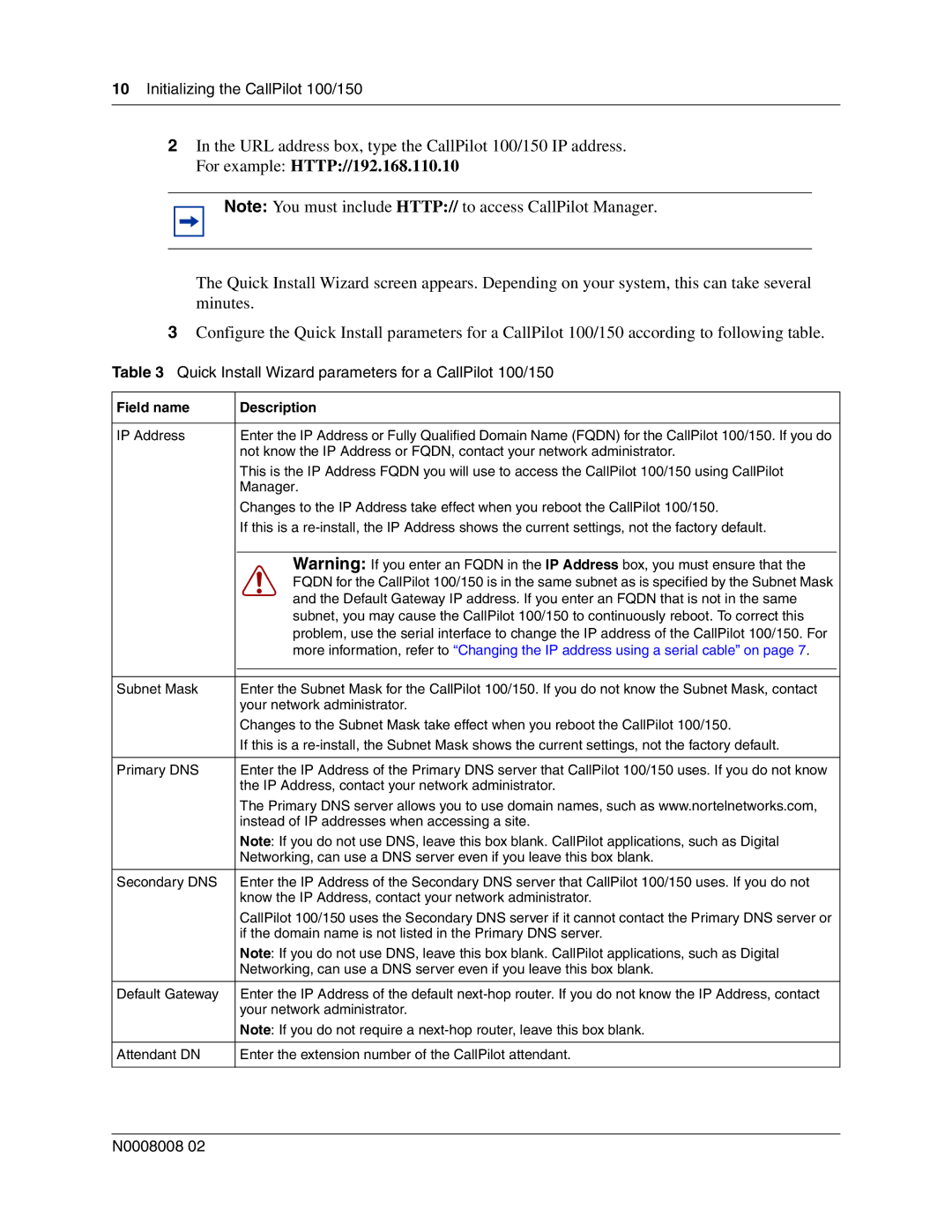CallPilot 100, CallPilot 150 specifications
Nortel Networks CallPilot 150 and CallPilot 100 are integrated voice messaging platforms that cater to businesses seeking sophisticated communication solutions. These systems enable users to manage voice messages, emails, and fax services seamlessly, enhancing their productivity and streamlining communications.Both systems are designed for medium to large-sized organizations, offering a range of features that make it easier to communicate effectively. One of the standout characteristics of CallPilot 150 and 100 is their user-friendly interface, which allows for easy navigation and management of messages via a telephone or computer. Users can listen to, forward, and manage their messages with simple prompts, ensuring a smooth experience.
The CallPilot systems support multiple languages, making them suitable for diverse workplaces. This multilingual capability allows businesses to cater to a broader customer base, facilitating better communication within multilingual environments. Additionally, the systems are equipped with automated attendant functionality, which can greet callers and guide them to the appropriate extension, improving customer service and reducing waiting times.
A key feature of both CallPilot models is their interoperability with Nortel’s phone systems, including Meridian and Norstar. This integration ensures that organizations can leverage their existing infrastructure while enhancing their capabilities with advanced messaging solutions. The systems provide unified messaging, enabling users to access their messages from different platforms like email, voicemail, and fax, which centralizes communication and improves responsiveness.
CallPilot 150 offers greater storage capacity compared to CallPilot 100, making it an ideal choice for organizations with higher messaging volume requirements. Both systems utilize digital recording technology that ensures high-quality message playback, ensuring clarity in communications.
Moreover, CallPilot solutions are equipped with security features that safeguard sensitive information from unauthorized access. These functions are crucial in today’s business environment, where data protection is paramount.
In summary, Nortel Networks CallPilot 150 and CallPilot 100 combine advanced technologies with practical features to deliver effective voice messaging solutions. Their user-centric design, interoperability with Nortel systems, and robust features make them suitable options for businesses aiming to enhance their communication strategies in a competitive marketplace.

